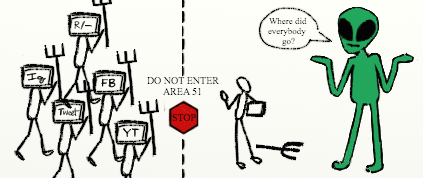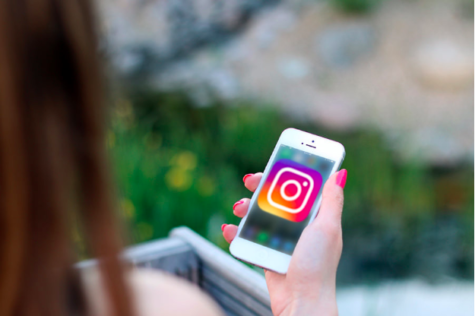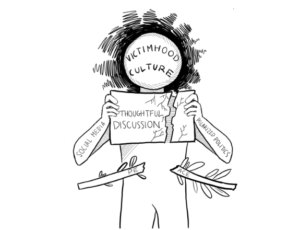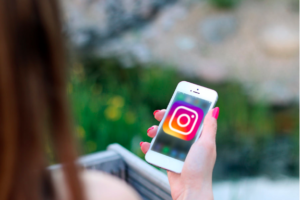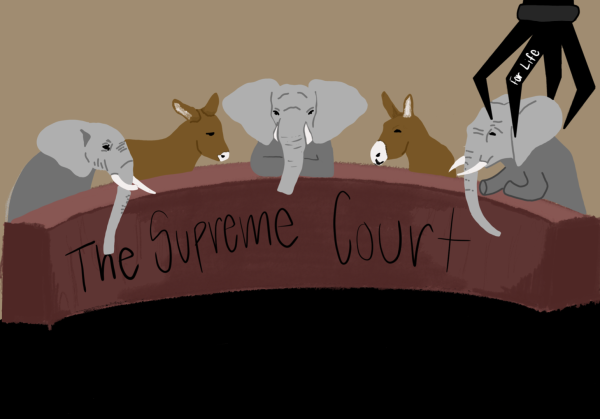Social Media (On Its Own) Cannot Spur Successful Social Movements
November 12, 2019
Social media has emerged as a tool with which information spreads rapidly on a global scale. Whether on Instagram, Twitter, Facebook or even TikTok, social media has supported and expanded many different causes. While social media has been credited with the rise of many movements, it is ultimately not enough on its own to spur actual change or long-lasting initiatives.
Approximately 79% of all Americans are on social media in 2019, according to Statista. With so many people connected, social media has helped build momentum for many activist movements.
The months or even years spent discussing logistics, leafleting and building a coalition…were crucial to the success of the civil rights movements
— The Washington Post
The #BlackLivesMatter (BLM) movement, started in July 2013 to campaign against violence and the systemic racism against African Americans, is one of the most successful examples of when a movement used social media. According to the American Civil Liberties Union (ACLU), “BLM will forever be remembered as the movement responsible for popularizing what has now become an indispensable tool in the 21st-century organizing efforts: the phenomenon that scholars refer to as ‘mediated mobilization.’”
Although BLM may not be getting as much attention today, six years after its start the movement “is stronger, larger and more global than ever before,” according to the ACLU. The movement still has an impact today, when information through social media seems to exhaust or die out within very little time. However, BLM is a movement that was not dependent on organizing its movement through social media platforms. It only uses it as a tactic.
To elaborate, an article by the Washington Post shows the success of the civil rights movement, saying “by the time the civil rights movement had such a large march, they’d been working on [the issues] for 10 years – if not more…The months or even years spent discussing logistics, leafleting and building a coalition…were crucial to the success of the civil rights movements.” It seems that causes today that have a lasting impact were successful not just because of social media outreach, but also because of the organization and logistical work.
Many recent movements have fallen due to a strong reliance on social media attention, but social media is just the first step. There is much more that must be done.
One such example is the Women’s March, started in 2017 as a response to Trump’s election. The march was initially a small Facebook event, which grew to involve millions across the nation. The movement, however, is rapidly deteriorating, its most recent march cancelled due to controversy and disorganized leadership. Although the movement was very popular on social media, reaching hundreds of millions of people, it ultimately lacked the precision and logistic workings to continue through the years like the BLM movement. Social media was the initial step to getting this movement off of the ground, but without any solid organization, its goals are vague, its purpose is muddled, and its success is limited.
Perhaps the most recent example is with the Area 51 raid. Although not an activism movement, it illustrates a similar trend. It started out as a Facebook invite, where approximately two million people committed to an event to storm the government base to reportedly see aliens. Ultimately, it did not live up to the hype surrounding the event that was growing through social media.
The “raid” ended up as only a few hundred people showing up to Area 51, camping out in the desert and attending “Alienstock,” a small music concert. Although the event was largely a joke, it could have at least attracted more attendees through not just relying on social media as the only tactic.
Social media, while effective in getting the word out and reaching many people, is not able to keep a movement strong on its own. Social media is only one step, not the only step. After a group of any size has found success on these platforms, it is just as important to ensure building a robust system. Any movement started on social media is still a professional group or company, and it needs the attention and organization of one to be successful.



